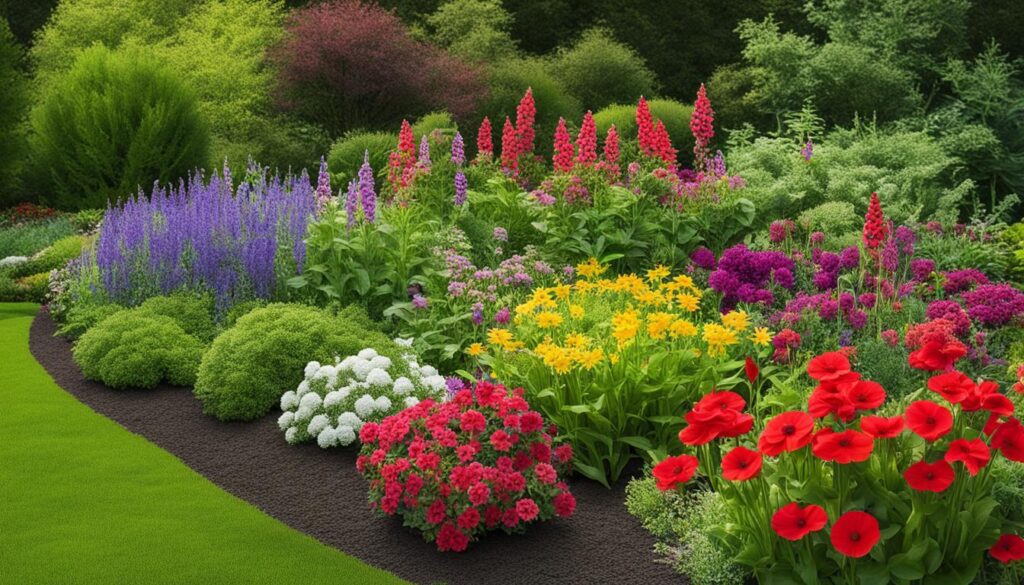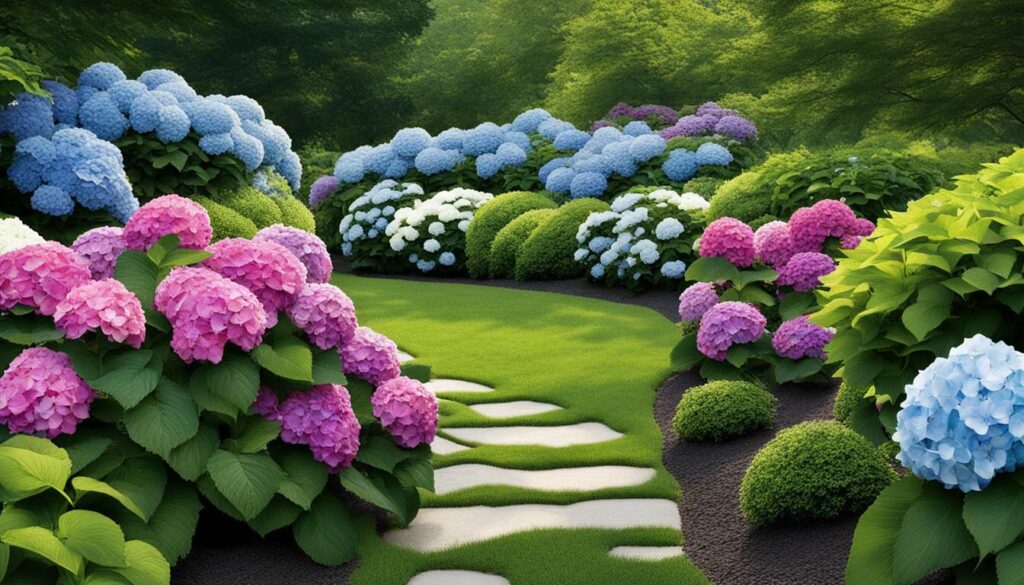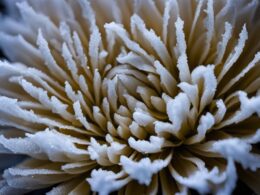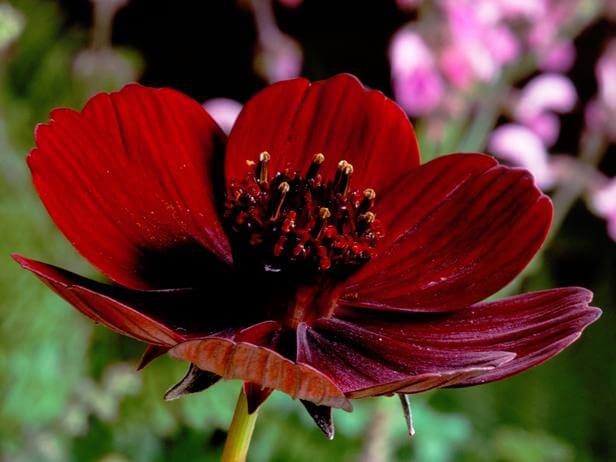Hydrangeas are a popular choice for gardens, with their beautiful blooms and vibrant colors. But are they all perennials? Understanding the growth cycle of these plants is important, as it can vary depending on your garden’s hardiness zone.
Most hydrangeas are hardy in USDA zones 3-7, but some varieties can thrive in colder climates or shade. It’s important to note that hydrangeas are considered perennials, as they take more than one or two seasons to complete their life cycle. However, in zones where they are not naturally perennials, they can be treated as annuals.
Post Summary
- Hydrangeas can be classified as annuals, perennials, or biennials depending on the hardiness zone.
- Understanding the growth cycle of plants is important, as some may be perennials in one region but only suitable as annuals in another.
- All hydrangeas are considered perennials as they take more than one or two seasons to complete their life cycle.
- Proper care and maintenance, such as pruning and deadheading, ensure a long lifespan for hydrangeas.
- Hydrangeas can be treated as annuals in zones where they are not naturally perennials.
Annuals, Biennials, and Perennials: Explained
Understanding the different growth cycles of plants is essential for successful gardening. Plants can be classified as annuals, biennials, or perennials based on their life span. Let’s take a closer look at each category:
Annual Plants
Annual plants complete their entire life cycle within one growing season. From seed germination to flowering and seed production, they go through the entire process in a single year. After this cycle is complete, annual plants die. Some common examples of annual plants include marigolds, petunias, and zinnias.
Biennial Plants
Biennial plants have a two-year life cycle. In the first year, they focus on vegetative growth, developing leaves, stems, and roots. It is in the second year that biennial plants bloom, produce seeds, and then die. Some well-known biennial plants are foxgloves, sweet William, and hollyhocks.
Perennial Plants
Perennial plants have a life span of more than two years. They typically live for many years, often coming back year after year. Perennials often have a period of dormancy during the winter months before regrowing in the spring. Examples of perennial plants include roses, hostas, and, of course, hydrangeas.
Understanding the different types of plants and their life cycles is crucial for planning your garden effectively. By incorporating a mix of annuals, biennials, and perennials, you can create a well-rounded and visually appealing garden that changes from season to season.
The Perennial Nature of Hydrangeas
All hydrangeas are considered woody perennials, meaning they live for more than two years. Unlike some other plants with soft green stems, hydrangeas have sturdy, woody stems that contribute to their longevity. With proper care and maintenance, hydrangeas can live for up to fifty years, adding beauty to your garden year after year.
Hydrangeas require sufficient sunlight to thrive. They generally prefer partial shade, especially in hotter climates, but can tolerate full sun in cooler regions. It’s important to choose the right location for your hydrangeas, ensuring they receive the appropriate amount of sunlight for optimal growth and blooming.
Maintenance plays a key role in the longevity of hydrangeas. Regular pruning helps to shape the plant and remove any dead or damaged branches. Deadheading, or removing spent blossoms, promotes continuous blooming and prevents the plant from diverting energy into seed production. By following these maintenance practices, you can ensure a long and healthy life for your hydrangeas.
Remember, proper maintenance and care are crucial for the long-lasting beauty of hydrangeas. By providing sufficient sunlight, regular pruning, and deadheading, you can enjoy the vibrant blooms of hydrangeas in your garden year after year.
Hydrangea Maintenance Tips:
- Choose a location with the appropriate sunlight for your hydrangeas
- Prune regularly to maintain shape and remove dead or damaged branches
- Deadhead spent blossoms to promote continuous blooming
- Monitor soil moisture and water as needed
- Protect plants from extreme temperatures and harsh weather conditions
| Variety | Growth Habit | Hardiness Zones |
|---|---|---|
| Bigleaf Hydrangea | Deciduous shrub | Zones 5 and warmer |
| Panicle Hydrangea | Deciduous shrub | Varies by cultivar; generally hardy in zones 3-8 |
| Oakleaf Hydrangea | Deciduous shrub | Zones 5 to 9 |
| Climbing Hydrangea | Woody vine | Zones 4 to 8 |
Winter Survival: Perennial Hydrangeas in Cold Climates
Hydrangeas are renowned for their stunning blooms, but can they withstand the harsh conditions of winter in cold climates? The answer lies in their winter hardiness and ability to thrive in different USDA zones. Let’s explore how perennial hydrangeas navigate the challenges of cold weather and continue to grace our gardens with their beautiful flowers.
In general, most hydrangeas are hardy in USDA zones 3-7, with some varieties even tolerating zone 9. This means they are accustomed to cold temperatures and have the innate ability to survive freezing conditions. However, it’s important to note that certain types of hydrangeas may only thrive in specific zones. For example, smooth hydrangeas (Hydrangea arborescens) are native to North America and are better suited for colder climates, while bigleaf hydrangeas (Hydrangea macrophylla) are more sensitive to frost and require protection in colder zones.
To ensure the winter survival of perennial hydrangeas, there are a few steps you can take. First, it’s essential to choose the right variety for your climate. Research the specific hardiness zone of the hydrangea you wish to grow and ensure it aligns with your region. Next, provide adequate winter insulation by mulching around the base of the plant to protect the roots from freezing temperatures. You can also consider covering the plants with burlap or a plant cover to shield them from harsh winds and snow. Finally, avoid pruning in the fall, as this can remove the protective layer of old growth that helps insulate the plant during winter.
By following these tips and providing the proper care, you can successfully grow hydrangeas in containers and enjoy their stunning blooms. Just remember to choose the right container, provide winter protection, and ensure appropriate sun exposure. With a little effort, you can create a beautiful display of potted hydrangeas that adds charm and color to your outdoor space.
Hydrangeas as Perennials: Conclusion
In conclusion, hydrangeas are versatile and beautiful flowering plants that can be enjoyed as perennials in most regions. Whether you choose to grow them in the ground or in containers, hydrangeas have the potential to enhance any garden landscape with their stunning blooms and longevity.
Understanding the growth cycle of hydrangeas and their specific hardiness zones is essential for a successful and long-lasting garden. By selecting the right variety for your region and providing proper care, such as pruning and deadheading, you can ensure the health and vitality of your hydrangeas for years to come.
“Hydrangeas are like the gems of the garden, offering an abundance of flowers and lush foliage year after year. Their enduring nature makes them a favorite among gardeners, adding beauty and charm to any outdoor space.” – Gardening Enthusiast
Whether you have a small space or a large landscape, there is a hydrangea variety that will suit your needs. From the classic Bigleaf hydrangeas with their vibrant blue flowers to the stunning Oakleaf hydrangeas with their showy fall foliage, there is a wide range of options to choose from.
Remember to follow proper care guidelines for successful growth and blooming. Take into consideration factors such as soil conditions, sunlight or shade requirements, and regular pruning to maintain shape and stimulate new growth. With these tips in mind, you can create a stunning hydrangea garden that will bring joy and beauty to your outdoor space for years to come.
| Hydrangea Variety | Hardiness Zones | Growth Habit |
|---|---|---|
| Bigleaf Hydrangeas | Zones 5 and warmer | Classic blue flowers |
| Panicle Hydrangeas | Wide range of zones | Bloom in fall |
| Oakleaf Hydrangeas | Zones 5 to 9 | Stunning flowers and fall foliage |
| Climbing Hydrangeas | Zones 4 to 8 | Grows up to 30 feet tall |
Image source: https://seo writing.ai/32_6.png
Hydrangea Varieties and Hardiness
Hydrangeas come in a variety of stunning options, each with its own hardiness level and unique characteristics. Understanding the different hydrangea varieties and their suitability for your landscape is essential for successful cultivation. Here, we will explore some popular hydrangea varieties and their corresponding hardiness zones.
Bigleaf Hydrangeas
Bigleaf hydrangeas, known for their large and vibrant blooms, are a favorite among gardeners. These varieties, such as the classic blue-flowering hydrangeas, are generally hardy in zones 5 and warmer. They thrive in partial shade and require consistent moisture to produce their iconic blossoms. One well-known variety is the ‘Endless Summer’ hydrangea, which is bred to be more reliable in colder zones, providing continuous blooms throughout the summer.
Panicle Hydrangeas
Panicle hydrangeas, like the popular ‘PeeGee’ hydrangea, offer a unique flowering experience. These varieties produce cone-shaped flower clusters that often start off white and gradually turn pink as the season progresses. Panicle hydrangeas are known for their hardiness and ability to thrive in a wide range of conditions. They are consistent bloomers and are often planted in larger landscapes to create a stunning focal point in the fall.
Oakleaf Hydrangeas
Oakleaf hydrangeas are prized for their stunning flowers and beautiful foliage. As the name suggests, their leaves resemble the shapes of oak tree leaves, adding visual interest to the landscape even when the blooms are not present. Oakleaf hydrangeas are hardy in zones 5 to 9 and can tolerate more sun than other varieties. They offer the added beauty of vibrant fall foliage, with leaves turning shades of red, orange, and purple before dropping for the winter.
Climbing Hydrangeas
For those looking to add a unique touch to their landscape, climbing hydrangeas are an excellent choice. These woody vines can climb up to 30 feet tall and are hardy in zones 4 to 8. They produce clusters of white flowers against a backdrop of glossy green leaves, creating a striking visual display. Climbing hydrangeas prefer partial shade and can be trained to grow on walls, fences, or arbors, adding a touch of elegance to any outdoor space.
With their diverse range of varieties and hardiness levels, hydrangeas offer endless possibilities for creating a stunning landscape. By selecting the right hydrangea variety for your hardiness zone and considering their unique characteristics, you can enjoy the beauty of these flowering plants year after year.
| Hydrangea Variety | Hardiness Zones | Preferred Sun Exposure | Unique Characteristics |
|---|---|---|---|
| Bigleaf Hydrangeas | Zones 5 and warmer | Partial shade | Large, vibrant blooms; iconic blue flowers |
| Panicle Hydrangeas | Wide range of zones | Full sun to partial shade | Conical flower clusters; consistent blooming |
| Oakleaf Hydrangeas | Zones 5 to 9 | Partial shade to full sun | Oak-shaped leaves; vibrant fall foliage |
| Climbing Hydrangeas | Zones 4 to 8 | Partial shade | Woody vines; white flower clusters |
Tips for Growing Hydrangeas Successfully
If you want to ensure the successful growth and blooming of your hydrangeas, there are some important care tips to follow. By providing the right conditions and maintenance, you can help your hydrangeas thrive and enhance the beauty of your garden. Here are some key tips to keep in mind:
- Choose the right soil conditions: Hydrangeas prefer well-draining soil that is rich in organic matter. They thrive in slightly acidic to neutral pH levels. Before planting your hydrangeas, test the soil and make any necessary amendments to create an optimal growing environment.
- Provide adequate sunlight or shade: The sunlight requirements for hydrangeas can vary depending on the variety. While most hydrangeas prefer partial shade, some varieties can tolerate more sun. Be sure to research the specific sunlight needs of your hydrangea variety and plant accordingly.
- Regularly prune for shape and growth: Pruning is essential for maintaining the shape and promoting new growth in hydrangeas. Different hydrangea varieties may have different pruning requirements, so be sure to research the specific pruning guidelines for your particular variety. Pruning should be done in early spring or after the blooming season.
By following these tips, you can create the optimal conditions for your hydrangeas to thrive and bloom beautifully. Remember to provide the right soil conditions, adequate sunlight or shade, and regular pruning to maintain shape and stimulate new growth. With proper care, your hydrangeas will reward you with their stunning flowers and make a lasting impression in your garden.
Additional Tips for Pruning Hydrangeas
Proper pruning is crucial for the health and growth of hydrangeas. Here are some additional tips to keep in mind when pruning your hydrangeas:
- Know the blooming habit: Different hydrangea varieties bloom on different wood. Some varieties bloom on old wood from the previous season, while others bloom on new wood. Understanding the blooming habit of your hydrangea variety will help you determine the best time to prune.
- Remove dead or damaged branches: Pruning is an opportunity to remove any dead or damaged branches. This helps improve the overall health of the plant and encourages new growth.
- Don’t prune late summer and fall bloomers: If you have hydrangea varieties that bloom in late summer or fall, avoid pruning them in late winter or early spring. These varieties bloom on old wood, and pruning them at the wrong time can result in a loss of blooms.
Remember to always follow the specific pruning guidelines for your hydrangea variety to ensure the best results. With proper care and pruning, your hydrangeas will continue to flourish and bring beauty to your garden year after year.
| Hydrangea Variety | Blooming Habit | Pruning Time |
|---|---|---|
| Bigleaf Hydrangeas | Old wood | After blooming or early spring |
| Panicle Hydrangeas | New wood | Early spring |
| Oakleaf Hydrangeas | Old wood | After blooming or early spring |
Conclusion
Hydrangeas are a wonderful addition to any garden, offering beauty, charm, and versatility as perennial flowering plants. Whether you have a large landscape or limited space, hydrangeas can be grown in the ground or in containers, allowing you to enjoy their stunning blooms throughout the seasons.
By understanding the growth cycle of hydrangeas and their specific hardiness zones, you can ensure successful cultivation and long-lasting beauty in your garden. Proper care, such as providing the right soil conditions, adequate sunlight or shade, and regular pruning, will promote optimal growth and blooming.
With their wide range of varieties and characteristics, hydrangeas can transform your landscape with their vibrant colors and lush foliage. Whether you prefer the classic blue blooms of the Bigleaf hydrangeas, the consistent fall flowering of Panicle hydrangeas, the stunning foliage of Oakleaf hydrangeas, or the vertical growth of climbing hydrangeas, there is a hydrangea variety to suit every gardener’s taste.
So, get ready to enhance your garden with the timeless beauty of hydrangeas. With proper care and attention, these perennials will reward you with their exquisite flowers and lasting presence in your landscape for years to come.
Can Spider Plant Diseases Affect the Perennial Nature of Hydrangeas?
Yes, common spider plant diseases can affect the perennial nature of hydrangeas. It’s important to be mindful of potential cross-contamination when caring for both plants. Proper maintenance and regular inspections can help prevent the spread of diseases and ensure the health of your hydrangeas.
FAQ
Are all hydrangeas perennials?
Yes, all hydrangeas are considered perennials as they live for more than two years.
How long do hydrangeas live?
With proper care and sufficient sunlight, hydrangeas can live for up to fifty years.
Can hydrangeas be treated as annuals?
Yes, hydrangeas can be treated as annuals in zones where they are not naturally perennials.
What hardiness zones are hydrangeas suitable for?
Most hydrangeas are hardy in USDA zones 3-7, with some varieties thriving in colder climates or shade.
Can hydrangeas be grown in containers?
Yes, hydrangeas can be grown in containers, making them a great option for those with limited garden space.
How should potted hydrangeas be cared for in winter?
In colder climates, potted hydrangeas should be moved to non-heated garages or sheds, or if the pot is cold-hardy, sunk into the ground.
What are some popular hydrangea varieties?
Popular hydrangea varieties include Bigleaf hydrangeas, Panicle hydrangeas, Oakleaf hydrangeas, and climbing hydrangeas.
How should hydrangeas be pruned?
Regular pruning is necessary to maintain shape and stimulate new growth in hydrangeas.











